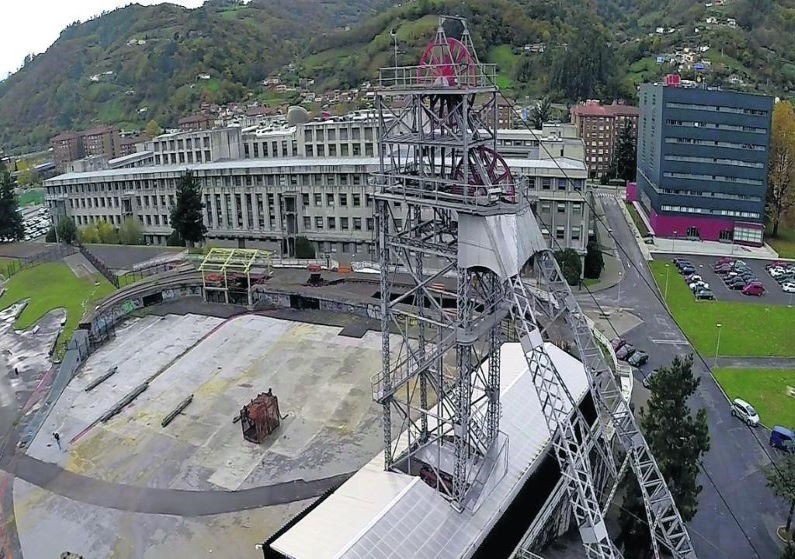
Photo: Hangela from Pixabay
Grupo Hunosa, undergoing a transformation away from coal, its basic activity, used geothermal energy from its former mine to build a 6 MW heating and power system. The project in the north of Spain won the Global District Heating Award.
The cooperation between Hulleras del Norte SA and the University of Oviedo in Asturias helped a local district heating network become the biggest one in Spain. The utility better known as Grupo Hunosa has been transforming its failing coal business, with an accent on renewables, particularly geothermal energy and its applications in heating and power.
Two pumps use the warmth from flooded shafts at the Barredo mine 85 and 95 meters below ground and hot water is supplied to the campus in Mieres, the regional hospital and a housing project. The new facility has the capacity of 2 MW and an annual output of as much as 2.88 GWh, adding to the existing 4 MW.
Hunosa covered a third of the EUR 1.5 million project from the European regional development fund
The new project is estimated to save 440 tons of carbon dioxide emissions compared to conventional technology and bring in EUR 120,000 in turnover per year. It includes air conditioning.

Hunosa’s payroll shrank to seven hundred people from the 25,000 at its peak half a century ago, prompting the search for alternatives. The firm run by the Spanish government’s SEPI holding has ventured into projects like biomass and energy crops.
The said pumps require 90 kW for pulling 330 cubic meters of water per hour apiece to the heat exchanger, consisting of three units. If the mine was active, water would need to be pumped out at all times.
The number of the company’s employees dwindled down to just seven hundred from the 25,000 peak, reached in the 1970s
The temperature in the shaft is at a constant 23 degrees Celsius. Normally it gets one to three degrees hotter per one hundred meters of depth.
One third of the EUR 1.5 million investment was covered from the European regional development fund.

The pipes are from polypropylene, insulated with elastomeric material. The system accounts for 86.5% of the energy demand, of which it covers nearly the entire heating needs.
Asturias province, located in the country’s north, has seen a sharp drop in population numbers parallel to the disappearance of obsolete industries, as people move elsewhere for jobs. Projects like the one in Mieres are aimed at transforming the local society and improving the quality of life. It earned the Global District Heating Award in the emerging market category, as the sector is largely undeveloped in Spain.
One of the advantages of the geothermal facility is that, for instance, the water for the university and the high school can be delivered at a much higher temperature than the water for the residential buildings. It diversifies the opportunities in the market.


















I .have an idea about transferring water particles to heights, my first goal is to provide water for lands in high level .
But my main goal is to generate electricity from the height of the water after the condensate is created. So I will send it to you. I hope it will be noticed :
Abstract :
Method of supplying water needs for greenhouses with condensate, It is a method of transporting water particles and moisture in nature.
The difference is that in nature this transition takes place in the open space but in the way presented guided by moisture and water particles immersed in warm air and transported to high altitudes and after following the specified path , at the end, the air carrying the particles of water mixes with the cold air outside and with increasing cross-sectional area, the fluid flow rate also decreases this in turn reduces water storage capacity and humidity in the conduit and with that water droplets are removed from the fluid and collected and then sent for greenhouse use.
The difference that this method has with the transfer of liquid water
This is where the challenges of hydraulic elevation of water includes water weight and hydraulic forces of water flow like the destructive effect known as the hammer force, it is eliminated this will allow the transfer of water to altitudes that appear hydraulically hard and even unrecoverable.
The process consists of three parts:
A- Input system and water supply
B- Air Fluid Transmission System , Contains suspended and immersed water particles
C- System for the conversion of suspended particulate matter to liquid , For use in the greenhouse environment .
In section A – While warming the fluid air and water to prepare it for transfer to the heights, reservoir water is pumped into the air by pumps and nozzles as water particles and driven by the fan to the transmission tunnel.
In section B – Transmission system ; Air fluid containing suspended particles and submerged water by the transmission tunnel and track fans are driven to the desired location at altitudes.
In section C – Conversion of water suspended particles to liquid;
This is done by mixing fluid containing warm air and water particles with cold air outside this results in a decrease in fluid retention capacity and the appearance of water droplets at the destination. At this point, water droplets are collected and consumed by plants grown in the greenhouse. In this way, by transferring the plants’ water requirements to the heights, highland arable land is also used for greenhouse production. In addition, the heat consumed in the system can also be used for growing plants. It is also extensible and allows for more exploitation, including the use of water energy transferred to the heights
And the extraction of evaporated water from steam power plants. It is noteworthy that the basic pattern for designing this method,
First, get acquainted with water extraction from humidity and its investigation into the use of water energy produced by water extraction
It was for the production of electricity. That will be implemented during the review process; These include determining the appropriate amount of spraying of water particles into the fluidized air environment and its transmission. It is also how to choose the fan application to get the fluid to the heights. It is also the use of the energy of water extracted to generate electricity. It also uses the heat used to power the system
Used for growing plants in greenhouses this uses the heat used to produce greenhouse products.
I have been assisted by a Google translator for writing this article so I apologize for the possible mistake.
sincerely
Ali Akbar Vejdan